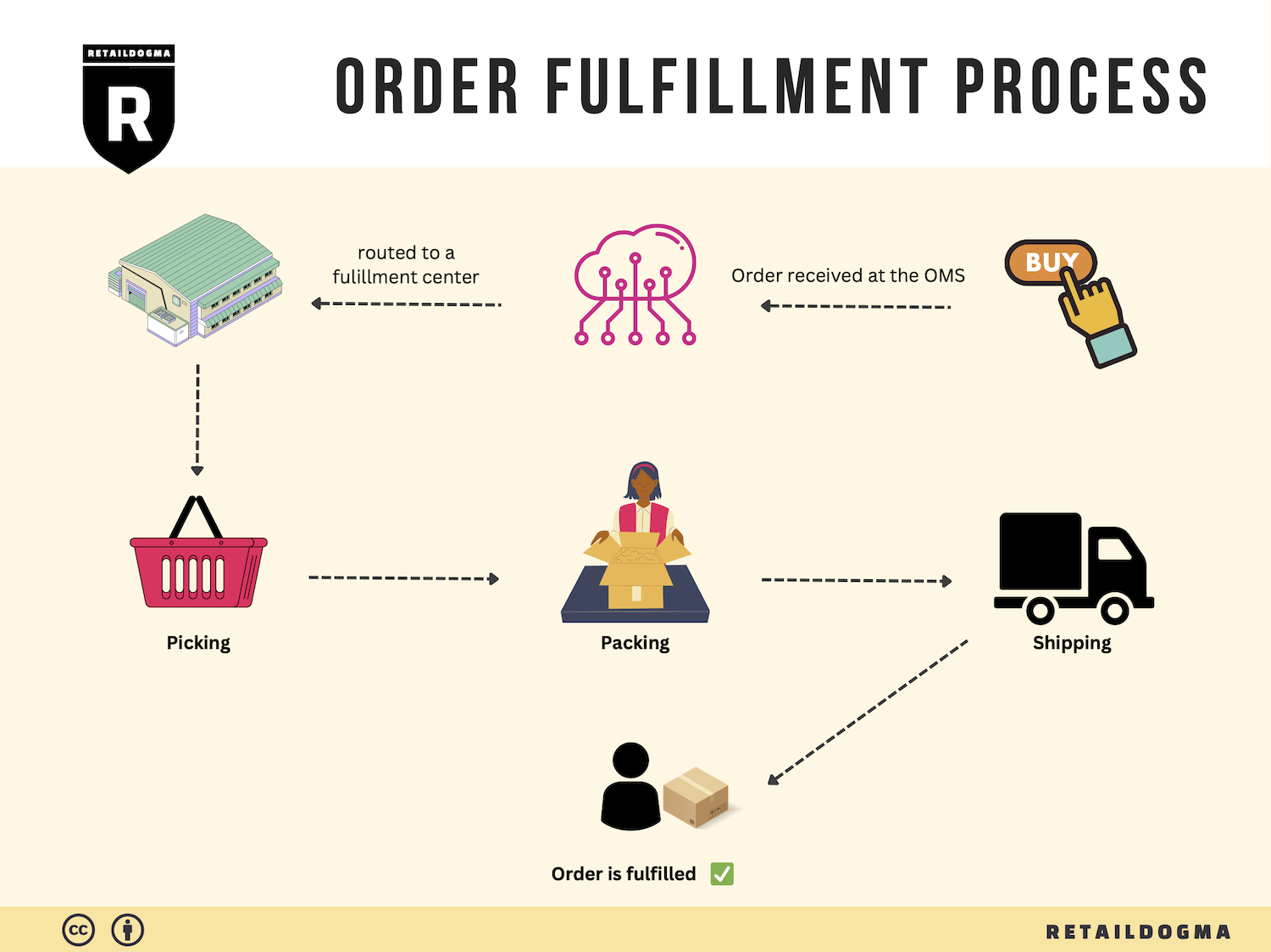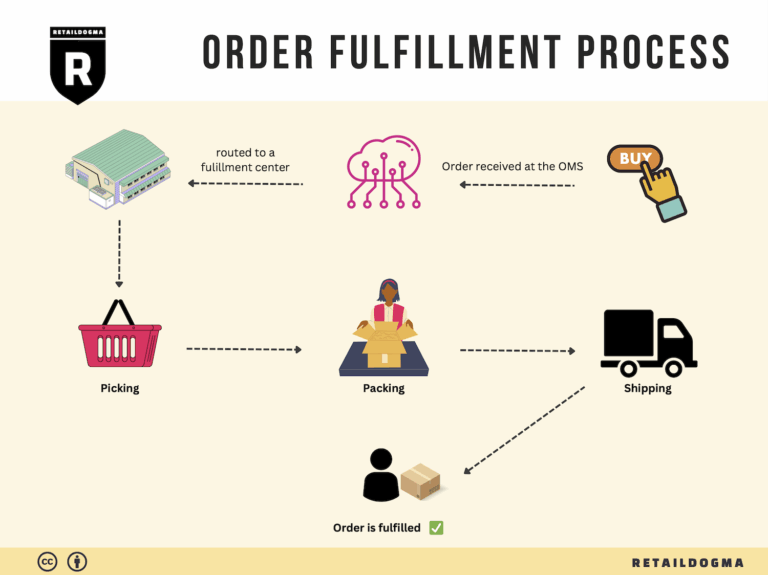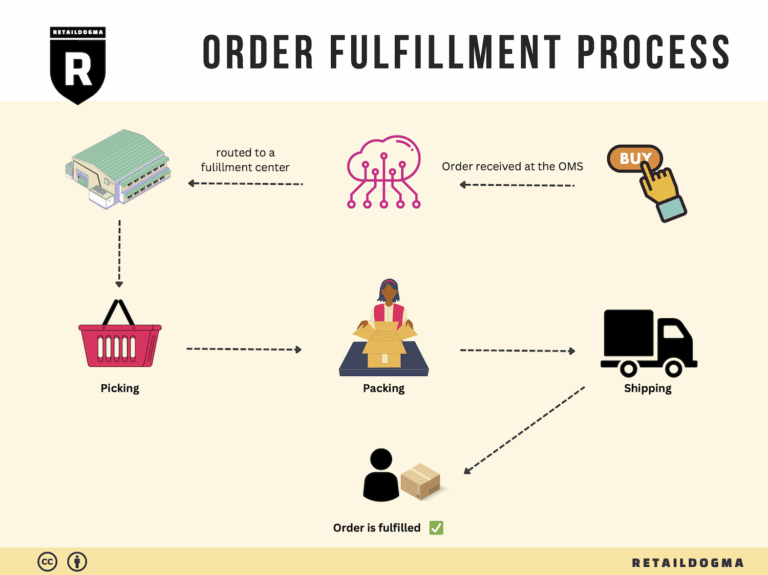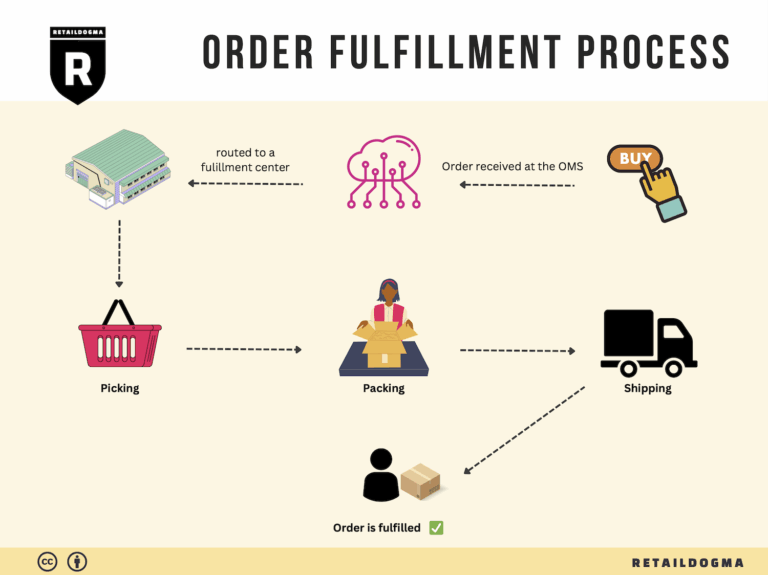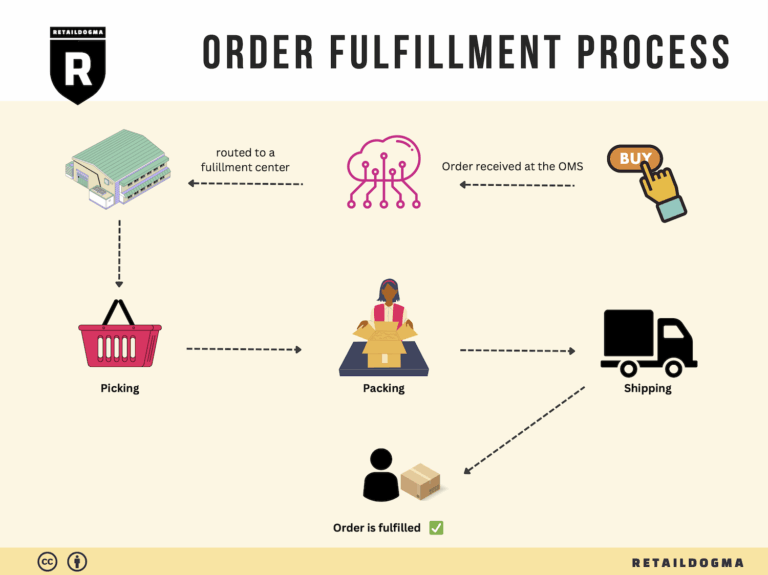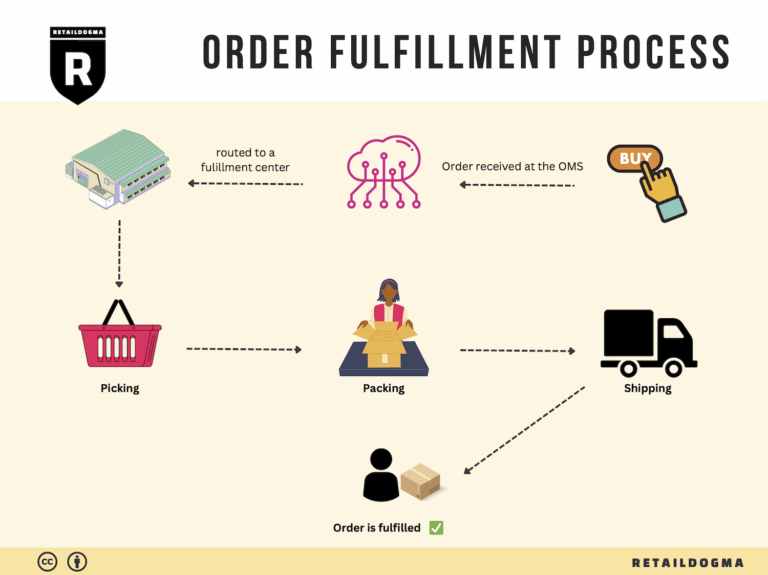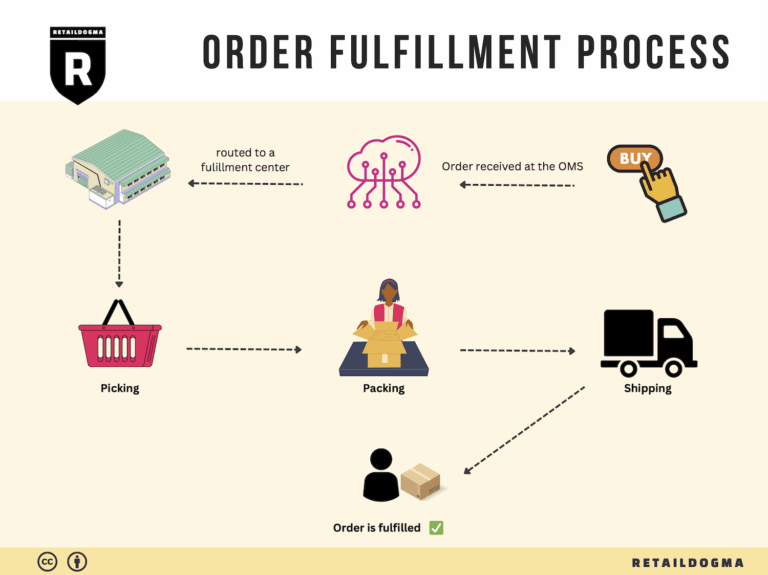What Is A Fulfillment Center? A Complete Guide (2025)
What is E-commerce Fulfillment? An Introduction for Growing Businesses
Understanding E-commerce Fulfillment
As a growing e-commerce business owner, you may find yourself overwhelmed with the logistics of packing and shipping orders. The thrill of sales can quickly turn into a daunting challenge when you realize that each order requires careful attention to detail—from picking the right product to ensuring it reaches your customer on time. This is where e-commerce fulfillment comes into play. Simply put, fulfillment is the process of getting a product from your inventory to the customer’s doorstep, encompassing everything from order processing to shipping and returns management.
In this guide, we will explore the various aspects of e-commerce fulfillment that are essential for scaling your business effectively. We will delve into different fulfillment models, such as Third-Party Logistics (3PL) and Fulfilled by Amazon (FBA), helping you understand the advantages and disadvantages of each option. Choosing the right fulfillment model is crucial, as it impacts not only your operational efficiency but also your customer satisfaction.
We will also cover the core services involved in fulfillment, including warehousing, inventory management, order picking, packing, and shipping. Understanding these services will empower you to select a fulfillment partner that aligns with your business needs. Furthermore, we will provide guidance on how to evaluate potential fulfillment partners, considering factors such as their technology capabilities, customer service, and scalability options.
Pricing is another critical aspect we will address. The costs associated with fulfillment can vary significantly based on the services you choose and the scale of your operations. We will break down common pricing structures, helping you to budget effectively and avoid unexpected expenses.
Our ultimate goal with this guide is to empower you to make informed, strategic decisions about your logistics operations. By understanding the nuances of e-commerce fulfillment, you can enhance your operational efficiency, improve customer satisfaction, and ultimately drive growth for your business. Whether you’re just starting out or looking to scale, the insights provided here will serve as a valuable resource in navigating the complexities of e-commerce fulfillment.
What You’ll Learn In This Guide
- What is E-commerce Fulfillment? An Introduction for Growing Businesses
- The Order Fulfillment Process: From ‘Buy’ Button to Customer’s Door
- Comparing Fulfillment Models: In-House vs. 3PL vs. Dropshipping
- A Deep Dive into Amazon FBA: Pros, Cons, and Who It’s For
- Core Services Offered by Fulfillment Centers
- How to Choose a Fulfillment Partner: A 6-Point Checklist
- Understanding Fulfillment Pricing: A Breakdown of Common Fees
- Frequently Asked Questions (FAQs) about Fulfillment
- Conclusion: Is Outsourcing Fulfillment the Right Move for Your Business?
- Important Disclaimer
The Order Fulfillment Process: From ‘Buy’ Button to Customer’s Door
1. Receiving Inventory
The order fulfillment process begins with receiving inventory. This step involves the arrival of goods at the fulfillment center, where they are checked against purchase orders to ensure accuracy. When products are received, they are assigned a Stock Keeping Unit (SKU), which is a unique identifier that helps track inventory.
Importance: Accurate receiving is crucial as it sets the foundation for all subsequent steps in the fulfillment process. Any discrepancies at this stage can lead to inventory inaccuracies, which can affect order fulfillment and customer satisfaction.
Key Term: SKU (Stock Keeping Unit) – A unique identifier for each distinct product and service that can be purchased.
2. Warehouse Storage
Once inventory is received and verified, it is stored in the warehouse. Efficient storage solutions are vital for maintaining organization and accessibility. Products are typically categorized based on various factors such as size, type, and sales velocity, and stored in designated areas.
Importance: Proper warehouse storage minimizes the time taken to locate products during the picking process. It also helps in maintaining optimal inventory levels, reducing the risk of stockouts or overstocking, which can tie up capital and space.
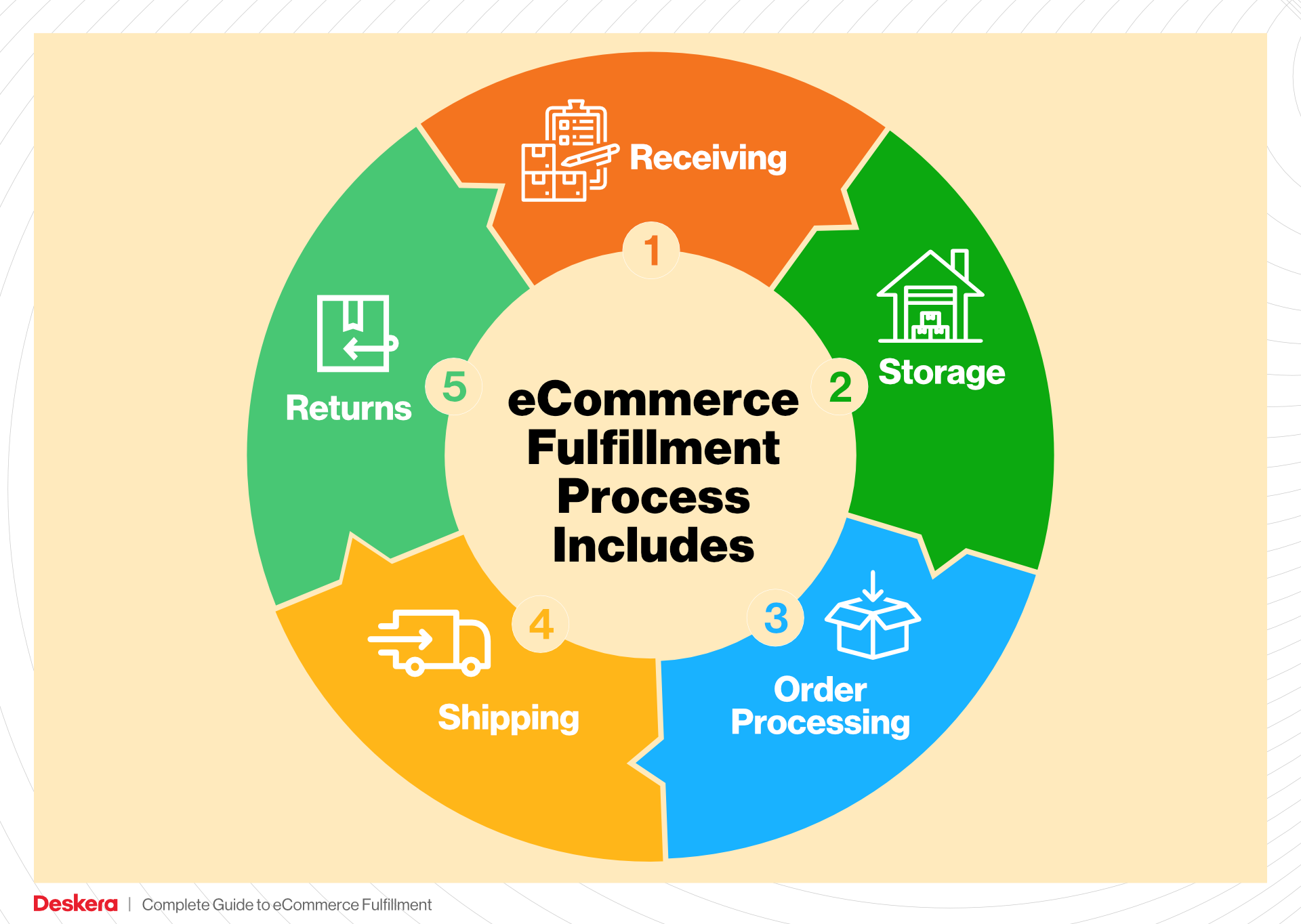
Key Term: Location Management – The systematic tracking of product locations within the warehouse to optimize space and retrieval times.
3. Order Picking
When a customer places an order, the next step is order picking. This involves retrieving the items from their storage locations based on a pick list generated by the fulfillment system. The pick list outlines the items needed for the order, their locations, and the quantities required.
Importance: Efficient order picking is critical for ensuring that orders are filled accurately and promptly. Delays or errors during picking can lead to unhappy customers and increased return rates, impacting overall business performance.
Key Term: Pick List – A document or electronic file that specifies the items and quantities to be picked for a specific order.
4. Order Packing
After items are picked, they are brought to the packing station, where they are prepared for shipment. This step involves checking the items for quality, packing them securely in appropriate materials, and labeling the packages for shipping. The packing process may also include adding marketing materials or invoices.
Importance: Proper packing is essential for protecting products during transit and ensuring they arrive in excellent condition. Well-packed orders also reflect professionalism and can enhance the customer experience, potentially leading to repeat business.
Key Term: Packaging Materials – Supplies such as boxes, bubble wrap, and tape used to protect and secure items during shipping.
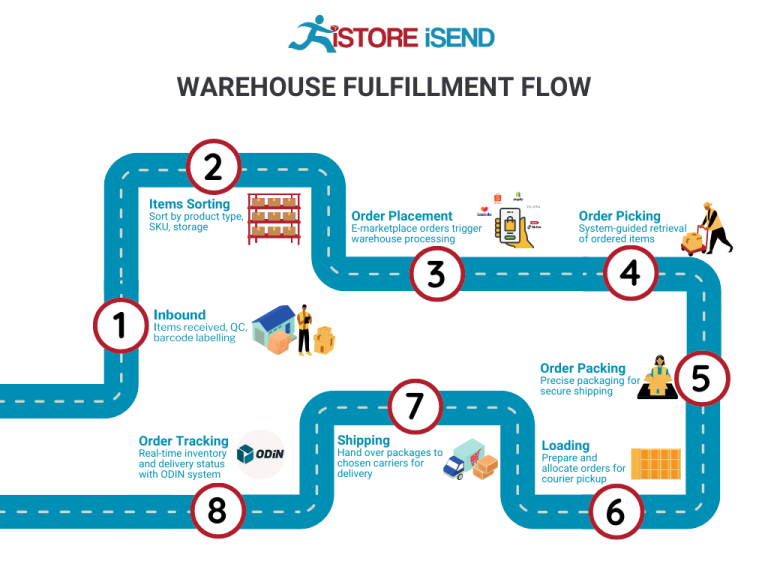
5. Shipping & Delivery
The final step in the order fulfillment process is shipping and delivery. Once packages are packed and labeled, they are handed over to a carrier for delivery. Businesses often choose from various shipping options, including standard, expedited, and international services, based on customer needs and budget considerations.
Importance: Timely and reliable shipping is crucial for customer satisfaction. Customers today expect fast delivery, and delays can negatively impact their perception of your brand. Effective shipping strategies can also help reduce costs and improve overall efficiency in the supply chain.
Key Term: Last-Mile Delivery – The final step of the delivery process where the package is transported from a transportation hub to its final destination, often considered the most complex and costly part of shipping.
By understanding and optimizing each step of the order fulfillment process, e-commerce business owners and operations managers can enhance efficiency, reduce costs, and ultimately improve customer satisfaction. Implementing best practices at each stage is key to scaling operations effectively and maintaining a competitive edge in the marketplace.
Comparing Fulfillment Models: In-House vs. 3PL vs. Dropshipping
Fulfillment Model Comparison Table
| Model | Who Handles Inventory | Best For (Business Stage) | Key Advantage | Key Disadvantage |
|---|---|---|---|---|
| In-House Fulfillment | Your business | Startups, Established | Full control over inventory and processes | High overhead costs and resource demands |
| Third-Party Logistics (3PL) | 3PL provider | Growth Stage | Scalable solutions and expertise | Less control over inventory management |
| Dropshipping | Supplier | Startups, Low-Capital | Low upfront investment and reduced risk | Lower profit margins and longer shipping times |
In-House Fulfillment
In-house fulfillment involves managing all aspects of the logistics process internally. This model requires businesses to take charge of inventory management, warehousing, order processing, and shipping. It is best suited for startups that have established a stable customer base and for businesses that have grown to a level where they can afford the overhead. The key advantage of in-house fulfillment is the total control it affords over inventory and operations, allowing for tailored processes that can enhance customer satisfaction and operational efficiency. However, this model comes with significant drawbacks, including high overhead costs related to staffing, warehouse space, and technology investments. As a result, businesses may find it challenging to scale efficiently without incurring substantial additional costs.
Third-Party Logistics (3PL)
Third-party logistics (3PL) providers offer outsourced logistics services, which include warehousing, order fulfillment, and shipping. This model is particularly beneficial for businesses in the growth stage that need to scale their operations without the burden of managing logistics in-house. A significant advantage of using a 3PL provider is the scalability it offers; businesses can adjust their logistics needs according to demand fluctuations without investing heavily in infrastructure. Moreover, 3PL providers typically possess industry expertise and technology that can enhance efficiency and reduce shipping costs. However, businesses may experience a loss of control over their inventory management processes, which could lead to issues with order accuracy and fulfillment speed if not properly managed. Establishing a strong partnership with a reliable 3PL is crucial to mitigate these risks.
Dropshipping
Dropshipping is a fulfillment model where the retailer does not hold inventory but instead relies on suppliers to fulfill orders directly to customers. This model is ideal for startups or entrepreneurs with limited capital since it requires minimal upfront investment. The key advantage of dropshipping is the significantly reduced financial risk, as businesses only pay for products after they have been sold. This allows for a broader product range without the need for inventory storage. However, dropshipping often comes with challenges such as lower profit margins, as suppliers typically charge higher prices for their products. Additionally, shipping times can be longer, particularly if the supplier is located overseas, which can negatively impact customer satisfaction. Managing relationships with multiple suppliers can also complicate order fulfillment and inventory consistency, making it essential for businesses to choose reliable partners.
Conclusion
Choosing the right fulfillment model is critical for e-commerce businesses aiming to scale effectively. Each model—whether in-house fulfillment, third-party logistics, or dropshipping—has its unique advantages and challenges that must be carefully considered based on the business’s current stage, resources, and growth ambitions. By understanding these models and their implications, e-commerce business owners can make informed decisions that align with their operational needs and long-term goals.
A Deep Dive into Amazon FBA: Pros, Cons, and Who It’s For
What is Fulfillment by Amazon (FBA)?
Fulfillment by Amazon (FBA) is a service offered by Amazon that allows sellers to store their products in Amazon’s fulfillment centers. Amazon then takes care of storage, packaging, and shipping of these products to customers. This service enables sellers to leverage Amazon’s extensive logistics network, ensuring fast and reliable delivery to customers across the globe. Additionally, FBA provides sellers with access to Amazon’s customer service and returns handling, streamlining the overall selling process on one of the largest e-commerce platforms.
When a customer orders a product through Amazon, FBA handles the entire process—from picking the product from the shelf to packing it and shipping it directly to the customer. Sellers can also benefit from Amazon’s Prime eligibility, which can significantly enhance their product visibility and appeal.
How FBA Works
-
Setup: Sellers create an Amazon seller account and set up FBA by choosing the products they want to fulfill through Amazon. They then prepare their products according to Amazon’s guidelines and send them to Amazon’s fulfillment centers.
-
Storage: Once Amazon receives the products, they are stored in the fulfillment centers. Sellers are charged storage fees based on the amount of space their products occupy.
-
Order Fulfillment: When a customer places an order, Amazon’s system automatically processes the order, picks the item from the warehouse, packages it, and ships it directly to the customer.
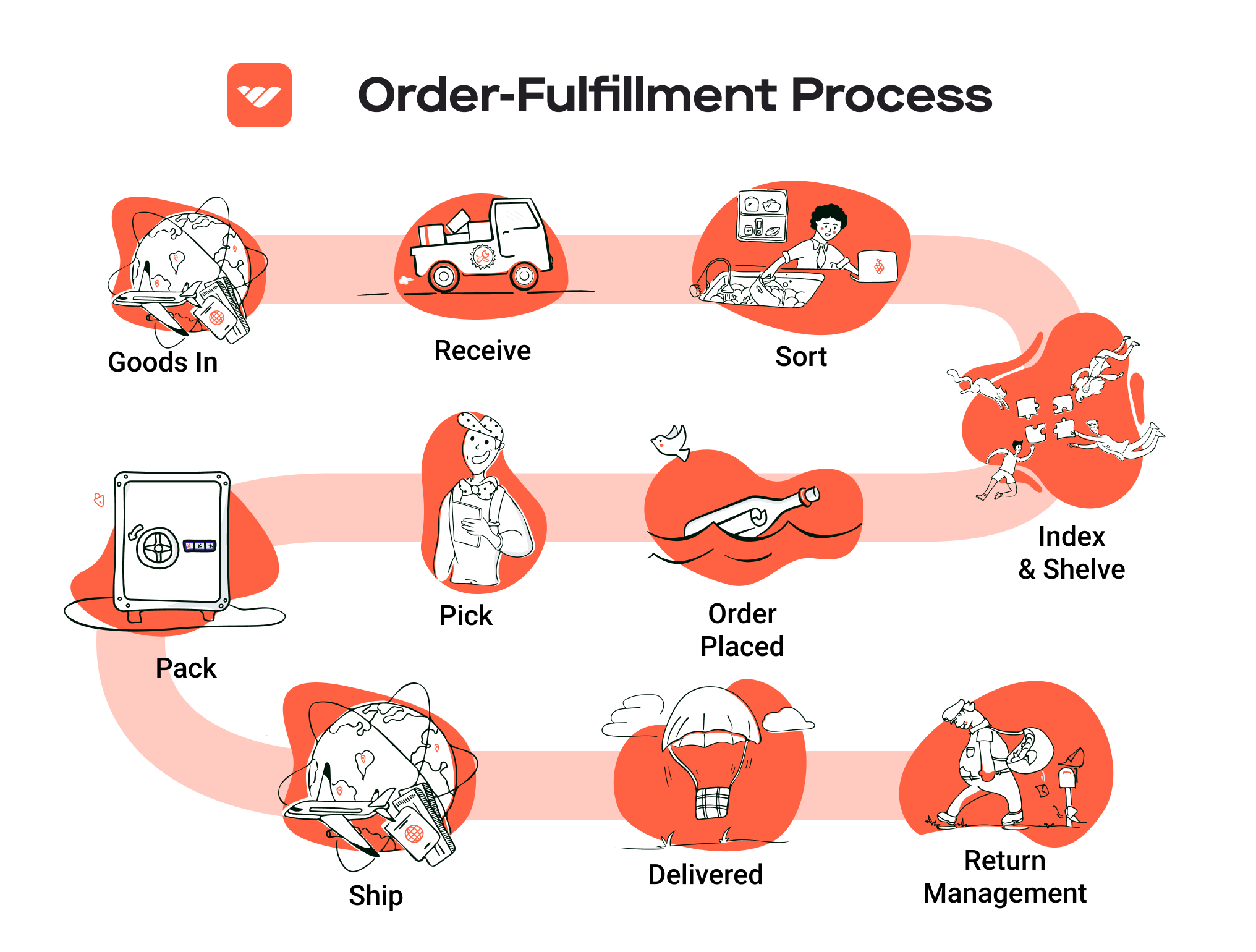
-
Customer Service: Amazon handles all customer service inquiries related to FBA orders, including returns and refunds, allowing sellers to focus on other aspects of their business.
-
Reporting and Analytics: Sellers can access a range of reports and analytics to track their sales performance, inventory levels, and other key metrics.
Pros of Fulfillment by Amazon (FBA)
1. Prime Eligibility
One of the most significant advantages of FBA is the eligibility for Amazon Prime. Products fulfilled by Amazon are automatically listed as Prime, which can boost sales significantly. Prime members are known for their loyalty and propensity to spend more, as they expect fast, free shipping.
2. Increased Customer Trust
Products fulfilled through FBA are associated with Amazon’s trusted brand. Customers are more likely to purchase items that are backed by Amazon’s customer service and return policies, leading to higher conversion rates.
3. Multi-Channel Fulfillment
FBA isn’t limited to Amazon sales. Sellers can use FBA to fulfill orders from other sales channels, such as their own websites or other marketplaces. This flexibility allows businesses to streamline their logistics under one roof.
4. Simplified Logistics
FBA significantly simplifies logistics management for sellers. Amazon takes care of the storage, packing, shipping, and customer service, allowing sellers to focus on scaling their business and marketing their products.
5. Advanced Reporting and Analytics
Sellers using FBA gain access to Amazon’s sophisticated reporting tools, which provide insights into sales performance, inventory levels, and customer behaviors. This data is invaluable for making informed business decisions.
Cons of Fulfillment by Amazon (FBA)
1. High Fees
While FBA provides many benefits, it comes at a cost. Sellers incur various fees, including storage fees based on the volume of goods stored and fulfillment fees for each item sold. These fees can quickly add up, especially for low-margin products.
2. Strict Inventory Rules
Amazon has stringent inventory management rules that sellers must adhere to. This includes limitations on the number of units they can send to FBA centers and strict guidelines regarding product condition and packaging. Non-compliance can lead to additional fees or penalties.
3. Commingling Risks
FBA operates on a commingling model, which means that products from different sellers may be stored together. This can lead to potential issues, such as receiving returns that do not belong to the seller or problems with counterfeit items. Sellers must be diligent about monitoring their inventory and customer feedback.
4. Lack of Control Over Shipping
When using FBA, sellers relinquish control over the shipping process. Amazon’s logistics decisions—such as shipping methods and carrier selection—are made without seller input, which may not align with the seller’s brand standards or customer expectations.
5. Dependency on Amazon
Relying heavily on FBA can create a dependency on Amazon’s platform. Any changes in Amazon’s policies, fees, or algorithms can have a significant impact on a seller’s business.
Who is FBA Best For?
Fulfillment by Amazon is best suited for sellers looking to scale their e-commerce business without the burden of managing logistics. It is particularly advantageous for:
- Small to Medium-Sized Businesses: Sellers who want to leverage Amazon’s vast distribution network without investing heavily in their logistics infrastructure can benefit greatly from FBA.
- High-Volume Sellers: Businesses that sell products with good margins and high sales velocity can absorb FBA fees more easily, making it a profitable choice.
- Brand Owners: Companies that want to enhance their brand visibility and credibility through Amazon’s trusted platform can find FBA an effective tool for increasing sales.
- Multi-Channel Sellers: Sellers who operate on various platforms (e.g., Amazon, eBay, and their own websites) can streamline their operations using FBA for order fulfillment across all channels.
In conclusion, while FBA offers a multitude of advantages that can drive sales and enhance customer experience, it is essential for sellers to weigh these benefits against the potential downsides, such as fees and control limitations. By understanding the intricacies of FBA, e-commerce business owners can make informed decisions that align with their growth strategies.
Core Services Offered by Fulfillment Centers
Inventory Management & Warehousing
Fulfillment centers offer comprehensive inventory management and warehousing solutions that are crucial for e-commerce businesses looking to scale. This service involves the systematic storage and tracking of products within a warehouse. Advanced inventory management systems are employed to monitor stock levels, manage reorders, and provide real-time visibility into inventory status.
The benefits of effective inventory management are manifold. For one, it reduces the risk of stockouts and overstock situations, allowing businesses to maintain optimal inventory levels and ensuring they can meet customer demand without delay. Additionally, accurate tracking helps in minimizing losses due to theft, damage, or obsolescence. With scalable warehousing options, businesses can easily adjust their storage needs as they grow, making it a flexible solution that adapts to changing market conditions. Ultimately, this service enhances operational efficiency and supports a seamless supply chain, allowing businesses to focus on growth and customer satisfaction.
Pick and Pack Services
Pick and pack services are at the heart of any fulfillment operation. This process involves selecting items from inventory (picking) and then packing them for shipment (packing) to the customer. Fulfillment centers utilize sophisticated warehouse management systems to ensure that orders are fulfilled accurately and efficiently. Automation and technology play a significant role here, as they can speed up the picking process and reduce human error.
The primary benefit of utilizing pick and pack services is the enhancement of order accuracy and speed. E-commerce businesses can offer their customers quick turnaround times, which is essential in today’s competitive landscape. Quick and accurate order fulfillment not only boosts customer satisfaction but also encourages repeat purchases. Moreover, outsourcing this function allows businesses to focus on their core competencies, such as product development and marketing, rather than the logistical challenges of order fulfillment.
Kitting and Assembly
Kitting and assembly services involve combining multiple products into a single package or kit before shipping. This can include anything from assembling product bundles to creating promotional kits for special offers. Fulfillment centers can handle the entire process, from sourcing components to final assembly and packaging.
The advantage of kitting and assembly services lies in their ability to enhance product offerings and streamline operations. For e-commerce businesses, offering bundled products can lead to increased sales and higher average order values. Additionally, by outsourcing this function, businesses can save time and resources, allowing them to focus on marketing and customer engagement. The ability to provide customized kits also improves the customer experience, as it allows businesses to cater to specific needs and preferences.
Returns Management (Reverse Logistics)
Returns management, or reverse logistics, refers to the process of handling returned goods from customers. This service encompasses everything from processing returns to restocking items and managing the flow of returns back into inventory. A robust returns management system is essential for maintaining customer satisfaction and loyalty.
The benefits of efficient returns management are significant. Firstly, it simplifies the return process for customers, making it easier for them to return items and enhancing their overall experience with the brand. A seamless return process can significantly impact customer retention, as consumers are more likely to repurchase from businesses that handle returns well. Moreover, effective returns management allows businesses to analyze return data to identify trends and issues, helping them to minimize return rates in the future. This can lead to better product offerings and improved customer satisfaction, ultimately driving profitability.
In conclusion, fulfillment centers provide essential services that enable e-commerce businesses to scale effectively. By leveraging inventory management, pick and pack services, kitting and assembly, and returns management, businesses can enhance operational efficiency, improve customer satisfaction, and focus on growth in an increasingly competitive marketplace.
How to Choose a Fulfillment Partner: A 6-Point Checklist
Location & Warehouse Network
When choosing a fulfillment partner, the geographical location of their warehouses can significantly impact your shipping costs and delivery times. A fulfillment partner with a strategically located warehouse network can ensure faster delivery to your customers, which is crucial for maintaining high customer satisfaction.
Questions to Ask:
– Where are your warehouses located, and how do those locations align with my target markets?
– Do you have multiple facilities to accommodate different regions?
– How do you manage inventory across your warehouse network to ensure availability?
Technology & Integrations
In today’s e-commerce landscape, technology plays a pivotal role in streamlining operations. A robust fulfillment partner should offer advanced technology solutions that allow for real-time inventory management, order tracking, and seamless integration with your existing e-commerce platforms. This integration minimizes manual entry errors and optimizes the order fulfillment process.
Questions to Ask:
– What technology do you use for inventory management and order processing?
– How easily can your system integrate with platforms like Shopify, Amazon, or WooCommerce?
– Can you provide access to real-time data and reporting tools for monitoring performance?
Specializations (e.g., Cold Storage, Oversized Items)
Different businesses have unique needs, and not all fulfillment partners can cater to specialized requirements. If your products require specific storage conditions, such as climate control for perishables or handling for oversized items, ensure your potential partner has the necessary certifications and capabilities.
Questions to Ask:
– What types of specialized storage do you offer (e.g., cold storage, hazardous materials)?
– Are your facilities certified for specific product handling (e.g., FDA, alcohol)?
– Can you manage the kitting and assembly of products if needed?
Scalability & Capacity
As your business grows, your fulfillment needs will likely change. A capable fulfillment partner should have the ability to scale operations in response to your growth without compromising service quality. Assessing their capacity to handle fluctuations in order volume is essential.
Questions to Ask:
– What is your current capacity, and how do you plan to scale with my business?
– Can you handle seasonal spikes in order volume, such as during holidays or promotional events?
– What is your process for onboarding new clients and increasing capacity as needed?
Pricing and Contracts
Understanding the pricing structure of your fulfillment partner is crucial to maintaining profitability. Look for transparency in pricing, including any additional fees that may apply for storage, shipping, or special services. Carefully review contract terms to avoid hidden costs and ensure flexibility as your business evolves.
Questions to Ask:
– Can you provide a detailed breakdown of your pricing structure?
– Are there any hidden fees I should be aware of (e.g., for returns, restocking, or storage)?
– What are the terms of the contract, and is there flexibility for adjustments as my business grows?
Customer Support & Reviews
Exceptional customer support can be a game-changer when dealing with fulfillment challenges. A responsive and knowledgeable support team can help resolve issues quickly, minimizing disruptions to your operations. Additionally, researching customer reviews and testimonials can provide insight into the partner’s reliability and service quality.
Questions to Ask:
– What type of customer support do you offer (e.g., dedicated account manager, 24/7 service)?
– How do you handle issues such as order errors or shipping delays?
– Can you provide references or case studies from similar businesses you’ve worked with?
Conclusion
Selecting the right fulfillment partner is a critical decision that can influence your operational efficiency and customer satisfaction. By using this checklist, you can methodically evaluate potential partners based on essential criteria. Prioritize your specific business needs, and ensure that any potential partner can meet those requirements effectively. A well-chosen fulfillment partner can not only enhance your logistics operations but also play a significant role in your overall business growth.
Understanding Fulfillment Pricing: A Breakdown of Common Fees
Initial Setup Fees
Initial setup fees are typically charged when you first engage with a fulfillment service provider. These fees cover the costs associated with onboarding your business into their system, which may include configuring your account, integrating your e-commerce platform, and setting up inventory management systems. The amount can vary widely depending on the complexity of your needs and the provider’s pricing structure.
Common factors influencing initial setup fees include:
– Integration Complexity: If you require custom integration with your e-commerce platform, expect higher fees.
– Inventory Size: Larger inventories may require more setup time and resources.
– Customization Needs: Specialized services like kitting or custom packaging can also increase setup costs.
Receiving Fees
Receiving fees are charged when your products arrive at the fulfillment center. These fees cover the labor and resources needed to unload, inspect, and store your products. They are usually calculated based on the number of pallets or boxes received.
Key considerations for receiving fees include:
– Volume of Shipments: Higher volumes may result in bulk pricing, reducing the per-unit cost.
– Condition of Goods: Damaged or incorrectly labeled items can incur additional handling fees.
– Special Handling Requirements: If your items require special handling (like temperature control), expect to pay more.
Storage Fees (per pallet/bin)
Storage fees are incurred for the space your products occupy in the fulfillment center. These fees are typically charged on a monthly basis and can be calculated per pallet or bin, depending on how your products are stored.
Factors that influence storage fees include:
– Duration of Storage: Longer storage times can lead to increased costs, especially if you have slow-moving inventory.
– Size of Inventory: Larger items or a greater number of pallets will naturally lead to higher fees.
– Special Storage Needs: Items requiring climate control or special storage conditions may attract higher fees.
Pick & Pack Fees (per item/order)
Pick and pack fees are charged for the process of selecting items from inventory and preparing them for shipment. This fee can be calculated per item or per order, depending on the provider’s pricing model.
Considerations for pick and pack fees include:
– Order Complexity: Orders with multiple items typically incur higher fees due to the additional labor involved.
– Item Size and Weight: Heavier or bulkier items may also attract higher fees due to the extra handling required.
– Customization: Custom packaging or kitting services can add to the base pick and pack fee.
Shipping Fees
Shipping fees are one of the most variable costs in fulfillment pricing and can include domestic and international shipping options. These fees are generally calculated based on the weight and dimensions of the package, the shipping method selected, and the destination.
Key factors affecting shipping fees include:
– Shipping Carrier: Different carriers have varying rates, and some fulfillment centers negotiate discounted rates based on volume.
– Shipping Speed: Expedited shipping options will incur higher costs compared to standard shipping.
– Dimensional Weight: Some carriers charge based on the dimensional weight of the package, which can increase costs for larger but lighter items.
Tips for Getting an Accurate Quote
-
Be Transparent: Provide your fulfillment partner with as much detail as possible about your business model, product types, and expected order volumes. This information helps them tailor a quote to your specific needs.
-
Ask About All Fees: Ensure you understand all potential fees, including those that may not be immediately apparent, such as long-term storage fees or charges for returns.
-
Request a Breakdown: Ask for a detailed breakdown of the quote, including how each fee is calculated. This will help you identify areas where you can optimize costs.
-
Compare Providers: Don’t settle for the first quote you receive. Compare multiple fulfillment providers to find the best fit for your business needs and budget.
-
Negotiate Terms: If you have a significant volume of business, don’t hesitate to negotiate pricing terms. Many fulfillment centers are open to adjusting fees based on expected order volumes.
By understanding these common fulfillment pricing models and utilizing these tips, e-commerce business owners can make informed decisions that contribute to efficient and cost-effective logistics management.
Frequently Asked Questions (FAQs) about Fulfillment
1. What is Fulfillment Hub USA?
Fulfillment Hub USA is a third-party logistics (3PL) provider that specializes in comprehensive fulfillment services, including order processing, warehousing, shipping, and returns management. Our mission is to empower e-commerce businesses by streamlining their logistics operations, allowing them to focus on growth and customer satisfaction.
2. What is a 3PL?
A third-party logistics (3PL) provider is a company that manages logistics and supply chain functions for businesses. This includes services such as warehousing, order fulfillment, transportation, and inventory management. By partnering with a 3PL, businesses can outsource their logistics needs, reducing overhead costs and improving efficiency.
3. How do fulfillment services work?
Fulfillment services involve receiving, storing, and shipping products on behalf of a business. Once an order is placed, the fulfillment center picks, packs, and ships the product directly to the customer. This process typically includes real-time inventory management, order tracking, and returns processing, ensuring a seamless experience for both the business and its customers.
4. How much do fulfillment services cost?
The cost of fulfillment services can vary based on several factors, including order volume, storage needs, and specific service requirements. Generally, fees may include storage costs, picking and packing fees, shipping charges, and additional services such as returns management. It’s important to request a custom quote from Fulfillment Hub USA to understand the pricing structure that best fits your business.
5. What’s the difference between a warehouse and a fulfillment center?
A warehouse primarily focuses on storing goods, while a fulfillment center is designed to manage the entire order fulfillment process. Fulfillment centers include advanced logistics systems that handle order picking, packing, shipping, and returns, allowing businesses to provide timely and accurate deliveries to their customers.
6. What types of businesses can benefit from Fulfillment Hub USA?
Fulfillment Hub USA caters to a wide range of businesses, from small startups to large enterprises. We serve both B2C (business-to-consumer) and B2B (business-to-business) sectors, including e-commerce retailers, subscription box services, and manufacturers looking to streamline their logistics operations.
7. How does Fulfillment Hub USA ensure inventory accuracy?
We utilize advanced warehouse management systems that offer real-time inventory tracking and management. This technology minimizes errors by providing accurate data on stock levels, order statuses, and shipping information. Regular audits and quality control checks further enhance our inventory accuracy.
8. Can I integrate Fulfillment Hub USA with my existing e-commerce platform?
Yes, Fulfillment Hub USA offers seamless integration with over 40 popular e-commerce platforms, including Shopify, Amazon, WooCommerce, and Magento. This allows for hassle-free setup and ensures that your inventory and orders are synchronized in real-time, improving overall efficiency.
9. What shipping options are available through Fulfillment Hub USA?
We provide a variety of domestic and international shipping options tailored to meet your business needs. Our services include standard shipping, expedited options, and customized shipping solutions designed to optimize delivery times and costs. Our partnerships with major carriers ensure competitive rates and reliable service.
10. How does Fulfillment Hub USA handle returns management?
Our returns management service simplifies the returns process for both businesses and customers. We handle returns processing and restocking, providing detailed reporting to help you analyze return rates and identify potential areas for improvement. This ensures a hassle-free experience that can enhance customer satisfaction and loyalty.
Conclusion: Is Outsourcing Fulfillment the Right Move for Your Business?
Assessing the Benefits of Outsourcing Fulfillment
In today’s fast-paced e-commerce landscape, outsourcing fulfillment can be a game-changer for your business. By partnering with a reliable fulfillment service, you can save significant time and resources, allowing you to focus on core business activities like marketing and product development. Third-party logistics providers (3PLs) streamline the order fulfillment process, handling everything from inventory management to shipping, which not only enhances operational efficiency but also improves customer satisfaction.
Another critical advantage of outsourcing is scalability. As your business grows, so do your fulfillment needs. A competent fulfillment partner can effortlessly accommodate fluctuating order volumes, seasonal spikes, or new product launches without the need for substantial investments in infrastructure or labor. This flexibility ensures that you can meet customer demands promptly, maintaining your competitive edge.
Moreover, leveraging the expertise of a fulfillment service can significantly improve your logistics operations. With advanced technology, experienced personnel, and established relationships with shipping carriers, these providers can optimize shipping times and costs, enhance inventory accuracy, and mitigate the risks associated with returns and damaged goods.
However, the choice of a fulfillment partner is crucial. Selecting the right provider can either catalyze your growth or hinder your progress. It’s essential to consider factors such as their technology, customer support, and ability to integrate with your existing systems.
Call to Action
To determine if outsourcing fulfillment is the right strategic move for your business, conduct an audit of your current shipping and logistics processes. Assess areas for improvement and identify how a fulfillment partner could enhance your operations. By taking this proactive step, you can position your business for sustainable growth in the competitive e-commerce environment.
Important Disclaimer
⚠️ Important Disclaimer
The information in this guide is for educational purposes. Fulfillment services, pricing, and platform features change frequently. Always conduct your own due diligence and consult with providers directly before making business decisions.
